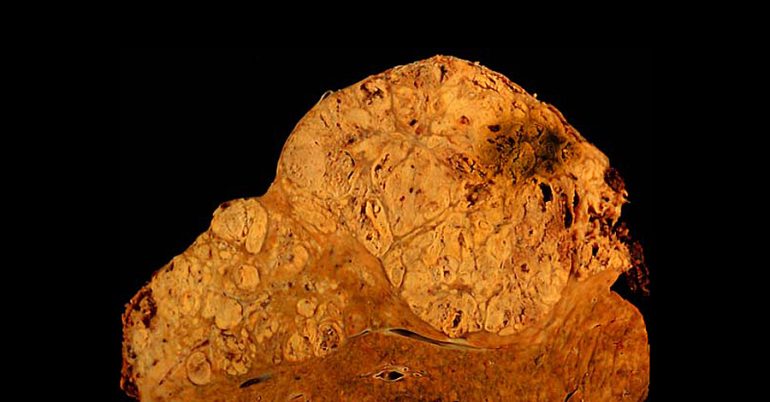Hope against liver cancer: A special form of ultrasound may help against tumors and metastases in the liver – even if the tumor is only partially destroyed, a study with mice suggests. Although only 50 to 75 percent of their liver tumors were exposed to so-called histotripsy, 81 percent of the animals were completely cancer-free afterward. There were also no metastases as reported by the researchers.
Liver cancer is one of the ten most common and deadliest types of cancer worldwide, and the liver is an organ that is particularly frequently affected by metastases. But despite major advances and various treatment options, the survival chances of affected patients are comparatively low: the five-year survival rate for hepatocellular carcinoma is only about 20 percent. One reason for this is that it is often not possible to completely remove the tumor.

Focused ultrasound “bursts” tumor cells
However, a relatively new method that uses a particularly intensive form of ultrasound to rule out liver tumors may help. In this so-called histotripsy, focused ultrasound pulses lasting a few microseconds but of high intensity are directed at the tumor tissue. Ultrasonic pulses cause the liquid to evaporate and thus produce rapidly moving microscopic bubbles in the tissue.
“This creates a strong mechanical stress that destroys cells in the target tissue,” explains Tejasvi Varlikar of the University of Michigan and his colleagues. What remains is a type of cell pulp that is broken down by the body over the course of several weeks. Preliminary trials of histotripsy suggest that this procedure can not only effectively destroy cancerous tumors, but there is evidence of an inhibitory effect on tumors that are not directly affected.
Partial destruction is enough
To follow this lead, Varlikar and his team have investigated what happens when liver cell cancer tumors are only partially destroyed – a case that can often happen with current treatments. For their study, they destroyed only 50 to 75 percent of individual tumors in eleven mice with liver cancer, while a control group remained untreated.
It turned out that although the one-time ultrasound treatment destroyed only the direct part of the tumor, the rest of the cancerous growth had also disappeared within a week. “Nine of the eleven animals — 81 percent — experienced tumor reduction after partial ablation and were then tumor free by the end of the study,” the research team reports. “We saw a complete regression of the destroyed and indestructible parts of the tumor.”
no metastases
This was confirmed by both magnetic resonance imaging and histological detailed analysis of the tissue. Just seven days after the histotripsy, the scientists could no longer observe any live tumor cells. At this point, fresh scar tissue was already forming where the liver tumor had previously been, showing no signs of degeneration.
Also positive: The mice treated with histotripsy developed no metastases over the three months of the study, as Verlikar and colleagues report. Although the remaining tumor cells could theoretically spread during such treatment, this fear was not confirmed: “Our results suggest that histotripsy does not increase the risk of metastases,” the team says.
Immune response eliminates cancer remnants
According to the researchers, this lasting effect of ultrasound treatment can be explained, among other things, by the activation of the body’s immune system. Because after histotripsy, more immune cells migrated to the half-destroyed tumor. “The treatment could therefore trigger an immunological antitumor response that contributed to the complete destruction of the tumor while preventing metastasis,” the team writes.
Ultrasound treatment may therefore represent a promising and relatively gentle therapy option for liver cancer and possibly other forms of cancer. “Histotripsy can overcome the limitations of currently available ablation methods and provide safe and non-invasive tumor control,” says Varlikar. According to the researchers, there were hardly any major side effects in previous studies.
Clinical studies have begun – also in Germany
The first clinical studies on the effect of histotripsy against liver cancer have already begun in the United States and Europe. Clinics in Germany are also involved in #HOPE4LIVER – with initial positive results: “The first treatment was performed successfully and the targeted tumor was destroyed. The patient was doing well both before and after the treatment,” said senior Braunschweig clinic Physician Mathis Planert reports.
The first patients were also successfully treated at the University Hospital in Magdeburg. Altogether, the new method is to be tested at seven centers in Europe. At the same time, there are also the first animal experiments on the use of histotripsy in brain tumors. (Cancer, 2022; doi: 10.3390/cancer14071612,
Source: University of Michigan

Web guru. Amateur thinker. Unapologetic problem solver. Zombie expert. Hipster-friendly travel geek. Social mediaholic.





